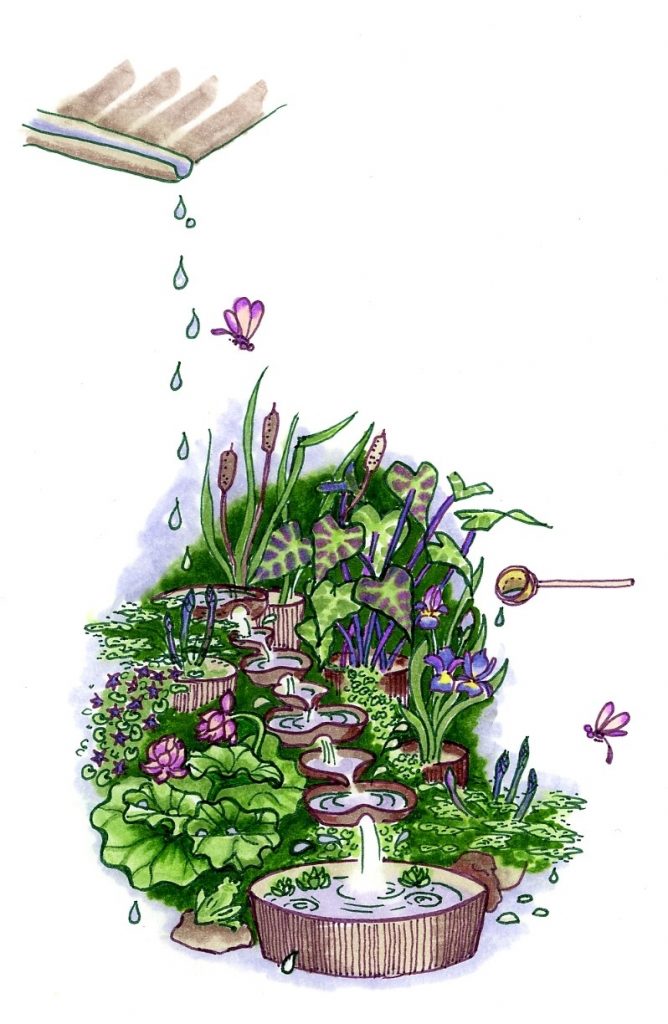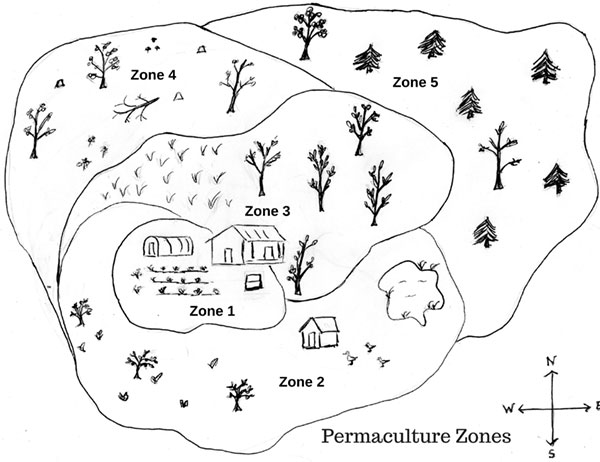Here are 12 design principles culled from the Permaculture philosophy. They are valuable guides no matter what you do. As New York green landscapers we incorporate them into our natural garden design. We seek to use as much water – natural pools, ponds and wetlands – as possible since this is an often overlooked element of gardens.

12 Permaculture Principles:
- Observe and interact: By taking time to engage with nature we can design solutions that suit our particular situation.
- Catch and store energy: By developing systems that collect resources at peak abundance, we can use them in times of need.
- Obtain a yield: Ensure that you are getting truly useful rewards as part of the work that you are doing.
- Apply self-regulation and accept feedback: We need to discourage inappropriate activity to ensure that systems can continue to function well.
- Use and value renewable resources and services: Make the best use of nature’s abundance to reduce our consumptive behavior and dependence on non-renewable resources.
- Produce no waste: By valuing and making use of all the resources that are available to us, nothing goes to waste.
- Design from patterns to details: By stepping back, we can observe patterns in nature and society. These can form the backbone of our designs, with the details filled in as we go.
- Integrate rather than segregate: By putting the right things in the right place, relationships develop between those things and they work together to support each other.
- Use small and slow solutions: Small and slow systems are easier to maintain than big ones, making better use of local resources and producing more sustainable outcomes.
- Use and value diversity: Diversity reduces vulnerability to a variety of threats and takes advantage of the unique nature of the environment in which it resides.
- Use edges and value the marginal: The interface between things is where the most interesting events take place. These are often the most valuable, diverse and productive elements in the system.
- Creatively use and respond to change: We can have a positive impact on inevitable change by carefully observing, and then intervening at the right time.
Another useful tool we like to use from Permaculture is the concept of Zones. A zone is a way of delineating a space from another. It may seem counter-intuitive but creating zones actually increases our sense of connection.
Zone 0
The house, or home center. Here permaculture principles would be applied in terms of aiming to reduce energy and water needs, harnessing natural resources such as sunlight, and generally creating a harmonious, sustainable environment in which to live and work. Zone 0 is an informal designation, which is not specifically defined in Bill Mollison’s book.
Zone 1
The zone nearest to the house, the location for those elements in the system that require frequent attention, or that need to be visited often, such as salad crops, herb plants, soft fruit like strawberries or raspberries, greenhouse and cold frames, propagation area, worm compost bin for kitchen waste, etc. Raised beds are often used in zone 1 in urban areas.
Zone 2
This area is used for siting perennial plants that require less frequent maintenance, such as occasional weed control or pruning, including currant bushes and orchards, pumpkins, sweet potato, etc. This would also be a good place for beehives, larger scale composting bins, and so on.
Zone 3
The area where main-crops are grown, both for domestic use and for trade purposes. After establishment, care and maintenance required are fairly minimal (provided mulches and similar things are used), such as watering or weed control maybe once a week.
Zone 4
A semi-wild area. This zone is mainly used for forage and collecting wild food as well as production of timber for construction or firewood.
Zone 5
A wilderness area. There is no human intervention in zone 5 apart from the observation of natural ecosystems and cycles.


Source: Wiki (of course!)
